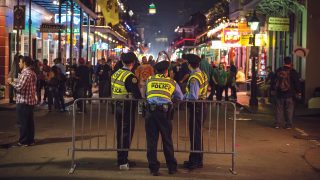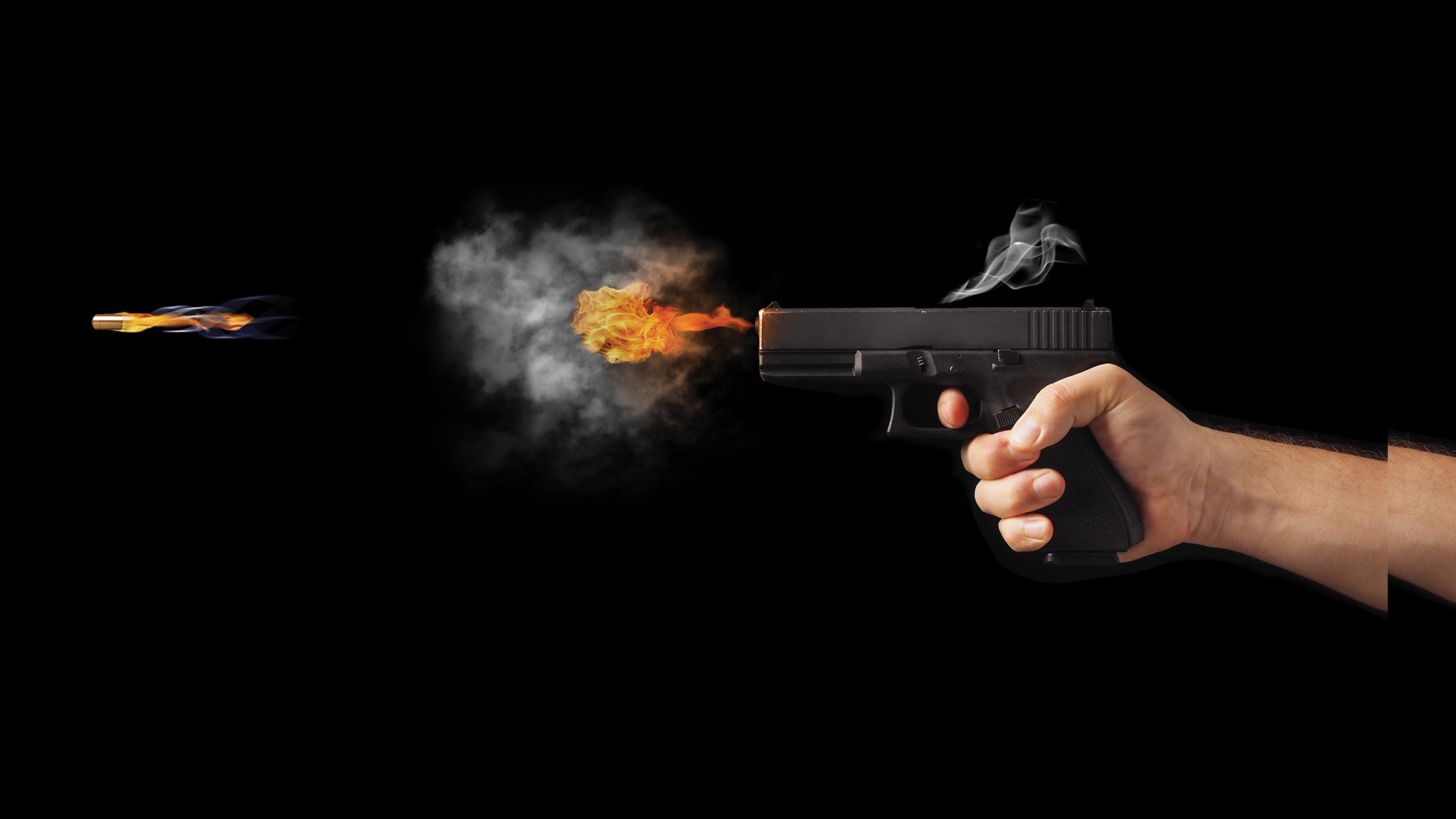
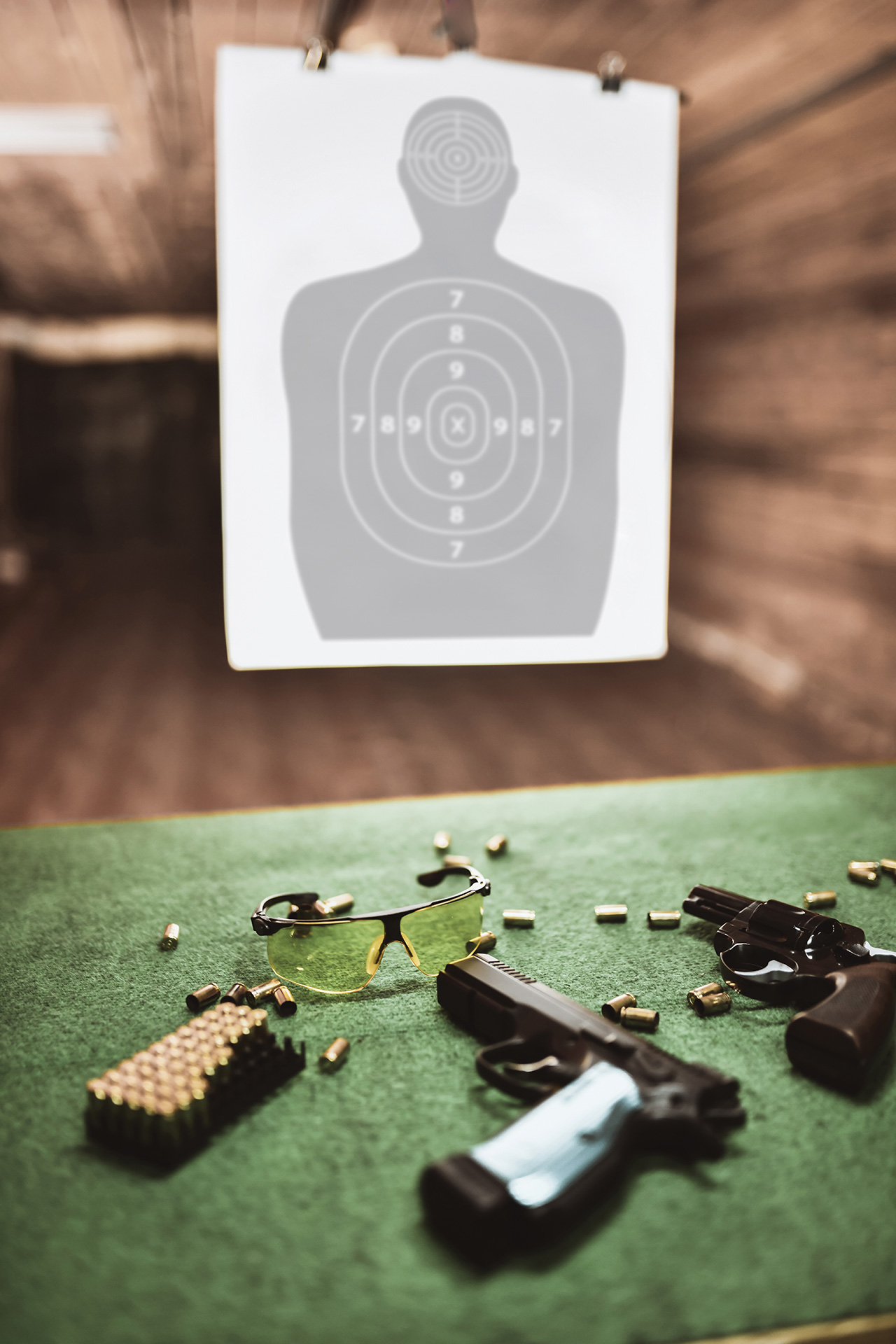
Variety is the spice of life, and using a well-chosen mix of targets during firearms training can keep it interesting. Maybe even more importantly, using a variety of properly chosen targets can make firearms training more effective. Instead of hammering away at the same old boring targets you always use, invest in a few different targets that will maximize your time and effort.
Most departments select one or two targets for use during training, regardless of the drill. This is unfortunate because different drills should have different goals and objectives. Selecting targets for firearms training should involve careful consideration of those goals and objectives, and the target features or scoring zones should be specifically selected for those drills. Therefore, our ranges should be equipped with a smorgasbord of targets to choose from to meet each specific training objective.
The bad
Before you purchase targets, take a few minutes to browse through the manufacturer’s website. It won’t take you long to realize there are some great targets available, but there are a plethora of very bad targets.
When you’re evaluating targets, one of the first areas to consider should be the scoring zones or rings. Look for targets with a scoring area that encourages realistic shot placement. Too many targets have improperly placed scoring zones. This is true whether you’re looking at paper, cardboard or photorealistic targets. Oftentimes, these scoring zones are too low to be combat effective. They may make great bull’s-eye targets, but if you’re training to make hits in the upper center mass area, these scoring zones aren’t going to help.
Ask any criminal investigator, coroner or medical examiner and they will tell you the parts of the human body capable of rapid incapacitation with handgun bullets are small. So if a goal is to make combat-effective hits to these parts of the human body, select targets that reflect the size of these areas. Smaller training zones on the head and upper center mass area are good places to start. If the training zones are too big, shots might strike in the scoring zone that would not be combat effective. However, it may also be important in your course of fire to track less effective shot placement, such as hits to the outer torso, shoulders or arms. Just make sure the scoring zones are the right size and shape.
If you’re searching for a good photorealistic target, and you expect your shooters to engage the target, avoid threat targets that are arguable. A threat pointing a gun directly at the shooter is a good threat target. Targets where the threat is pointing a gun away from the shooter can be arguable depending on context and may leave unnecessary training scars.
Another example of poor target selection is doing patrol rifle drills from 50 yards or farther with a target showing a threat armed with a knife. Unless you are training close to the target stands or there are innocent bystanders, this may not be a deadly threat. Choose your threat targets wisely. We don’t want to be training ourselves and others to shoot in these situations without the proper context.
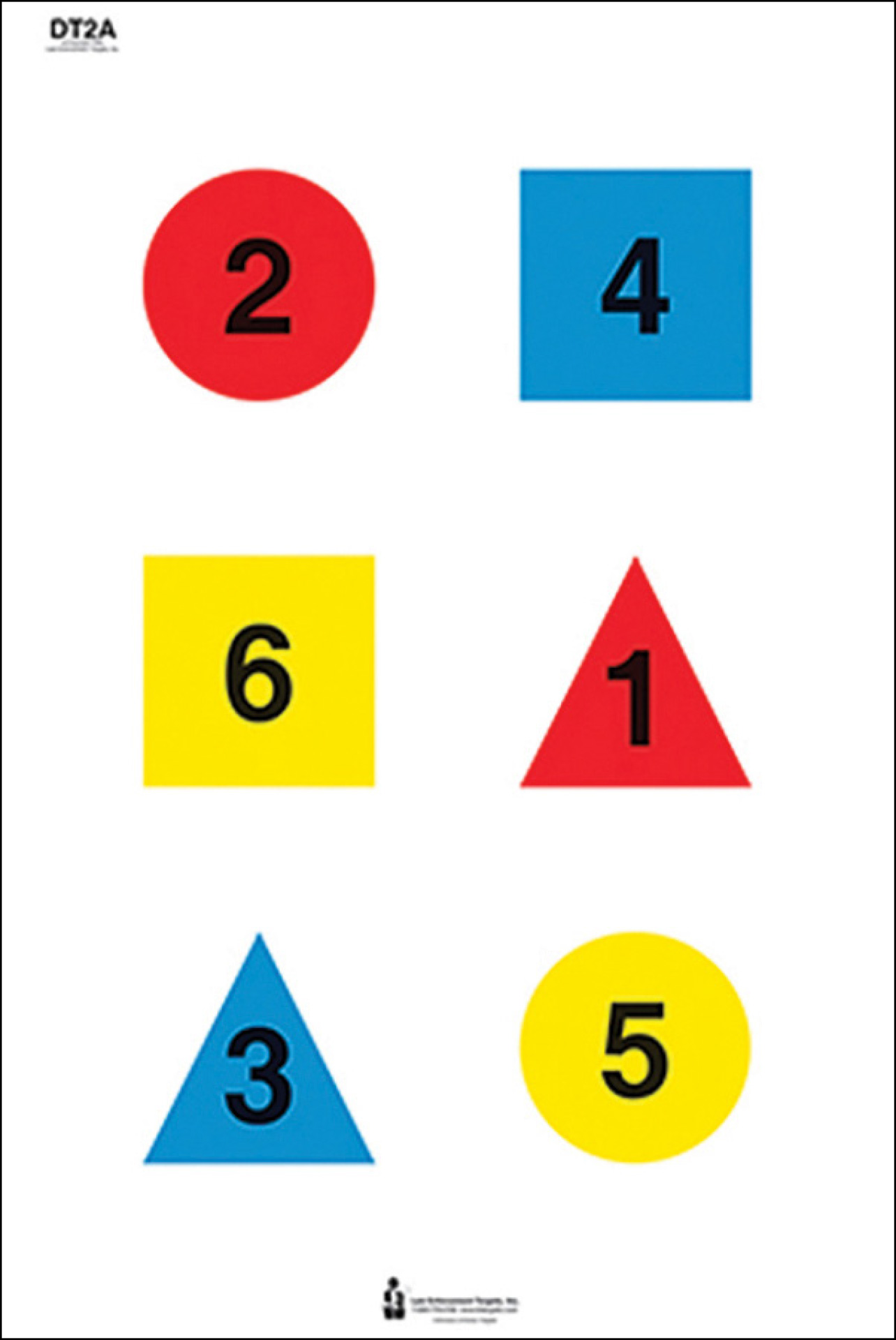
The good
Steel targets can be a great training tool because they are durable and provide instant audible feedback. Steel can save significant time on the range because these targets don’t need to be taped or changed. An occasional blast of fresh spray paint is all it takes to freshen up these targets and preserve them for the future. However, just like selecting paper or cardboard targets, we need to evaluate which steel targets to use based on our goals and objectives.
If the steel targets are too large, they aren’t providing a good target area to measure combat-
effective hits. On the other hand, steel targets that are too small are also problematic. Missed shots that go into the dirt are all too easily forgotten. On paper, these misses are proof we made a mistake, but on small steel targets, the negative feedback is eliminated. Without seeing the results of our errors, it is nearly impossible to fix our mistakes.
When selecting your paper or cardboard targets, well-placed shot zones with faded or indistinct lines force shooters to identify where to place accurate shots for the best threat-stopping effect. Instead of having an aiming point to reference that would not be present on a real person, the faded shot zone lines help us train to identify and hit the upper thoracic area.
Optional features on targets are also nice to have because they enhance the usefulness of the target by providing additional training possibilities. Examples are the “command” targets frequently found around the outside of the primary target area. These targets can be used for decision-making and target discrimination training. A variety of targets with different command shapes, angles, colors and other options are available. In addition to running drills on the main target area, training partners or instructors can call out any combination of shapes, numbers or colors for shooters to engage. Smaller command targets can be used for zeroing as well as fine-tuning marksmanship skills.

Current favorites
One of my favorite general-purpose targets is the NLEFIA-2S paper target. This two-sided target can meet the goals and objectives of most courses of fire. It has a silhouette target on one side with properly placed scoring zones in the upper thoracic area. These start small and gradually get larger, so it is versatile for a variety of training objectives. The silhouette side comes with two command targets that can be used for precision shooting drills or zeroing.
On the other side is a photorealistic target depicting an obvious threat with well-placed scoring zones that are only visible up close. Depending on the ambient light conditions, once shooters get beyond 5 yards, the scoring zones disappear. When using the threat targets during training, we see a significant number of hits below the combat-effective area. Once this is pointed out to shooters, they make an adjustment and start placing rounds in the areas most likely to result in rapid incapacitation. The threat side of the NLEFIA-2S target also has its own set of command targets. These consist of different shapes with numbers inside, providing another training option.
Another favorite is one of several variations of a discretionary target featuring different shapes, colors and numbers. This target provides shooters with a welcome break from the traditional threat and silhouette targets that law enforcement trainers always trot out to the range. There are a ton of different drills that can be run using this target, with the only limitation being your imagination. One of my favorite drills using these targets is Tom Givens’ Casino Drill. This drill incorporates a lot of different skills, including draw and presentation, multiple shots, target transitions, reloads and target assessment. A shot timer is used, so this drill is done under time duress.
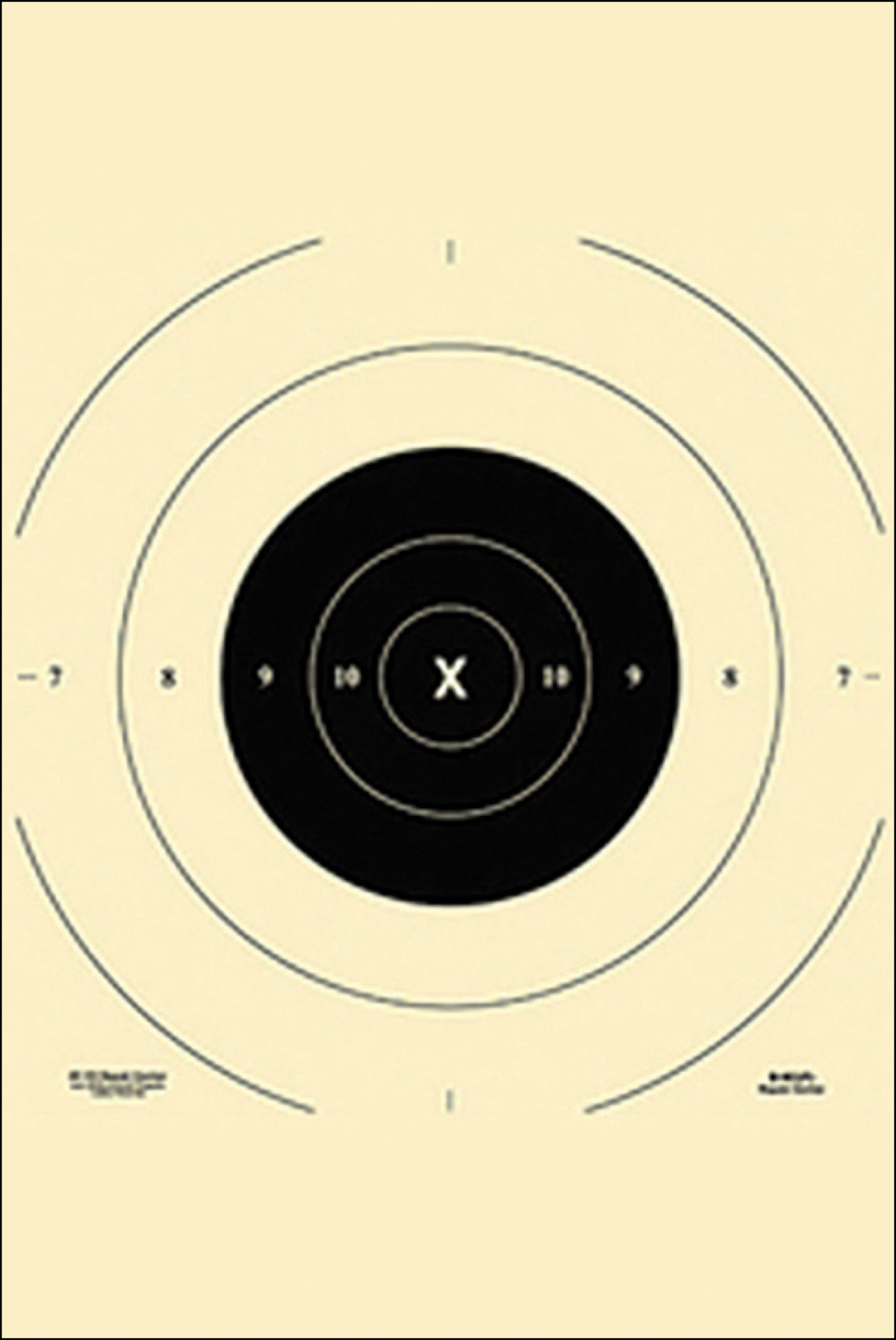
Tom Givens’ Casino Drill: Seven rounds loaded in the pistol and two seven-round spare magazines (7/7/7). Starting position is holstered and concealed, or a duty holster fully secured at the 5-yard line. On the start signal, the shooter will draw and shoot #1 one time, #2 two times, #3 three times, #4 four times, #5 five times and #6 six times. Each time the gun runs empty, the shooter must reload and continue. Targets must be engaged in numerical order with the correct number of shots. 100% hits are required. Time limit is 21 seconds. Anything under 16 seconds is a good performance.
Another good target that can push a shooter’s ability to balance combat speed with combat-
effective hits is the tried-and-true B-8 bull’s-eye target. You can find this target for free online with minimal effort. One of my favorite drills with this target is Justin Dyal’s 5-Yard Roundup. This drill tests a shooter’s ability to deliver effective hits under time duress and only uses 10 rounds.
Justin Dyal’s 5-Yard Roundup: Starting position is holstered and concealed, or a duty holster fully secured at the 5-yard line.
All strings have a 2.5 second par time. Any shot fired after the 2.5 second par time is negative 5 points.
- String 1: One shot draw from concealment or from a duty retention holster
- String 2: Four shots from ready
- String 3: Three shots from ready, strong hand only
- String 4: Three shots from ready, support hand only
A perfect score is 100 points all shot within the par time. Scoring 90 points or better is the mark of a skilled shooter.
Keep it interesting
Life is more interesting when you try new things, and firearms training is no exception. Take some time to consider how target selection can help you meet training goals and objectives, and change them up on a regular basis to keep things interesting. Always using the same target is boring, so get out of the rut and make training more effective and enjoyable.
Todd Fletcher is a retired sergeant from central Oregon with over 25 years of law enforcement experience. He presents firearms training and instructor development classes nationwide. Todd has presented at multiple regional, national and international conferences, including multiple ILEETA conferences and IALEFI events. He owns Combative Firearms Training, LLC, providing firearms training, instructor certification and instructor development classes to law enforcement, military and private security. He can be contacted at Todd@CombativeFirearms.com.
As seen in the March 2022 issue of American Police Beat magazine.
Don’t miss out on another issue today! Click below:




